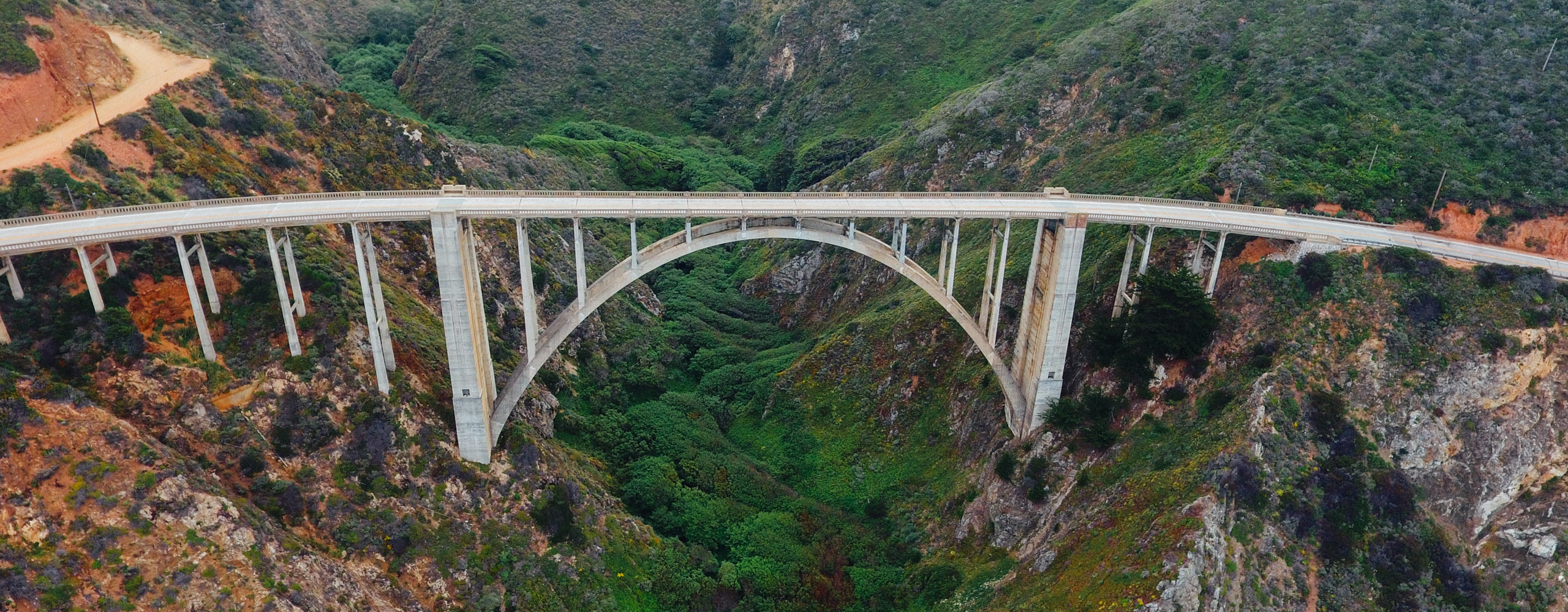
Simulation of a tunnel excavation at shallow depth (Ohio River Bridge) (2012)
The behavior, during excavation, of a shallow tunnel cutting densely fractured limestones and dolomites raised concerns. The tunnel is called "Drumanar tunnel‘ and located in Louisville, in Southern Indiana. The model geometry is shown on Figure 1.

Brittle Rock Fracturing Mechanisms in Deep Gold Mines (2012)
Many gold mines in South Africa are situated 2 to 4 km deep in sedimentary deposits extending for hundreds of square kilometers along mostly tabular reefs often less than one-meter thick. AngloGold Ashanti’s operational depth of mining increases every year following a declining gold reef with the surrounding rock experiencing large displacements. The mine seeks to understand the rock behavior, especially brittle failure mechanisms, inherent at depth with the ultimate goal being to develop a rational methodology for mine design, especially as mining continues deeper.

Norra Länken 3D Stability Analysis (2012)
The Northern Link (Norra Länken) will be part of a major road system surrounding the Stockholm metropolitan area. As part of the design work for this project, Itasca Consultants AB and Itasca Consultants S.A.S. has performed a three-dimensional numerical study to analyze of the effect of a large surface load being applied on top of a tunnel intersection with low (4 m) rock cover. The analyses were performed using FLAC3D, and the model was constructed with KUBRIX Geo mesh generator using in conjunction with the Rhino CAD package.

Numerical Modeling of Mining Sequences and Seismicity (2012)
Mining-induced seismicity is one of the most serious rock mechanics problems in sublevel caving in the LKAB mine in Kiruna.

System Design of Underground Facility for Spent Nuclear Fuel Storage (2012)
The design of the final nuclear repository design has been initiated by SKB and as a first step the system design of the underground facility has been executed.

A new loading system to limit segregation of a limestone-coal mix loaded in a cylindrical hopper (2012)
SOLVAY S.A. wanted to characterize the potential segregation of a mix of blocks (limestone + coal) charged into a cylindrical hopper. An intermediate loading structure between the conveyor and the hopper is added to limit segregation observed in a previous study.

Modelling of the excavation of two intersecting tunnels (2011)
In the framework of the extension of the Meuse/Haute‐Marne Underground Research Laboratory (France), Itasca Consultants SAS was commissioned by EIFFAGE to verify the tunnel stability and the design of the support structures installed during the excavation of two intersecting tunnels (Figure 1).In the framework of the extension of the Meuse/Haute‐Marne Underground Research Laboratory (France), Itasca Consultants SAS was commissioned by EIFFAGE to verify the tunnel stability and the design of the support structures installed during the excavation of two intersecting tunnels (Figure 1).

Size-distribution analysis of potentially formed blocks during the primary fragmentation of a fractured rock (2011)
The in‐situ primary fragmentation that occurs during mining operations (using caving methods) highly depends on pre‐existing fractures. Slip along fracture planes and breakage of rock bridges are the main controls of the fragmentation and block formation process during caving.

Jet Grouting Wall with Anchors (2011)
Keller Group constructed a 13 m deep underground parking lot. After many trials utilizing concrete diaphragm panels for ground support, this approach was found to be impractical. This was mainly due to the high aggregate-size variability of the morainic deposit (unconsolidated glacial debris) at the site. In such complex geotechnical situations jet grouting offers a valid alternative to traditional support systems.

Discrete modelling of fibrous structure from 3D tomography images and fiber segmentation process (2011)
Lafarge Center of Research is interested in analysing the microstructure of a fibrous media and its consequence on the resulting macroscopic behavior, for optimization purposes.

Long-term interaction between liner and claystone around a storage cavern (2011)
This project included feasibility studies to analyze building a radioactive waste repository set deep within a claystone layer. Itasca was asked to estimate the potential damage and consequences that may occur in the claystone surrounding a disposal gallery.

Observational Method for Deep Excavation (2010)
The Observational Method (OM) is a standard practice to support/guide design of infrastructure in sensitive environments, in particular for large excavations in urban areas. The example presented here is one of several cases from the construction of a recent subway line in Rome.

Depressurizing an Underground Ore Body at the McArthur River Mine in Northern Saskatchewan, Canada (2008)
Pre‐mining depressurizing of a deep ore body at the McArthur River mine, the largest single producer of uranium in the world, was considered to decrease the risk associated with mining and increase the ground stability and the amount of ore that could be extracted. The challenge was to depressurize the high‐grade ore bodies without propagating a significant amount of drawdown to the surface where impacts on surface‐water resources and the associated aquatic habitat would be significant environmental issues. The objective was to evaluate the technical and economic feasibility of depressurizing the ore body.

Analysis of MSE Retaining Wall (2008)
A section of retaining wall H on Trunk Highway 41 (TH41) south of the junction with TH212 in Chaska, Minnesota, "pushed out" following significant rainfall during construction. The rainfall event occurred prior to the pavement placement with the fill material exposed. The movement (horizontal displacement) of the wall that occurred after the rainfall event was permanent and visible.

Vibration influence in the agglomeration of compressed powders ()
For aluminous cement manufacturers, the raw materials are becoming scarcer due to the depletion or loss of natural resources. The extraction of the raw material, its conditioning and transport generate dust, which is largely not reused at present. KERNEOS Aluminate Technologies wishes to recycle these bauxite fines by compacting them with the ambition of creating a new recycling process for fine mineral particles. All the partners in the PARC project contributed to the development of a new compaction technology.
